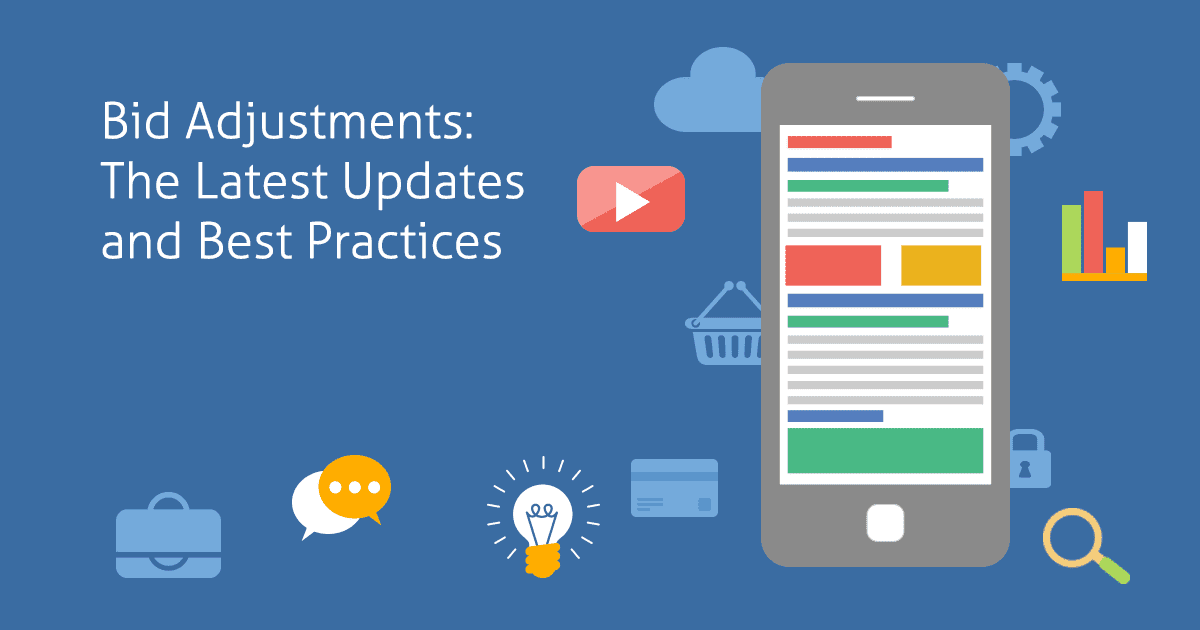If you’re a new to the concept, Google Ads bid adjustments allow you to decide how (what device), where (geo-location) and when (ad scheduling) your ads will show.
Mobile bid adjustments give you all the tools you need to get even more connected with your target audience, in a way that is personal and meaningful to them. If you’ve been optimizing your Google Ads campaigns solely on keyword performance, that’s a great start. But mobile bid adjustments offer yet another layer to optimize and become even more targeted and efficient in your advertising.
In other words, you choose when your ads show on desktop or mobile devices.
For example, if you know your ads perform particularly well on mobile devices, you may wish to increase your ad bid by, say, 30%. Of course, it’s well worth it to you if you know you’re going to see higher returns from mobile devices.
Bid modifiers also give you the freedom to show ads (or hide ads) based on other factors, such as location of searcher, when and how people search. This may be valuable if you know, for example, that clicks coming from smartphones are high converters.
If you’re looking for instructions on how to set bid adjustments, read how to add or remove a bid adjustment.
Let’s say your starting bid is $1 – from here a 30% increase for mobile would come to $1.30, giving you a $1.30 bid on mobile searches.
The inverse holds true, too—you can also decrease your mobile bid adjustments, as well.
The bid adjustment calculation
You kick off your bid adjustments where you should be kicking off all your digital ad decisions: deep in the weeds of your reports.
Let’s use mobile bid adjustments as an example. Looking at your data is the only way you can accurately understand the role mobile conversions is playing in your business. Are mobile conversion data through the roof? Increase your bid! Are desktop conversions looking enticing? Then quiet things down on the mobile side.
Once you know your goals, it’s time to drill down to the specifics. What value is mobile generating (or not generating) exactly? Google gives a handy step by step list to walk you through the formula here.
New Bid Adjustment Features
Bid adjustments have become feature-rich and sophisticated, giving you even more choice to control your campaigns.
A few of the latest updates include:
- New bid adjustment features: users can take their targeting many layers deeper than mobile device preferences, and include targeting for location and time of day.
- Call adjustments: Now, you can target based on call interaction. For example, you may wish to show call interaction ads more often on phones, or show call-only ads to certain user types.
- Multiple adjustments: You may wish to adjust many elements in your campaign. In these instances, Google typically blends these goals together to calculate how your bid will increase or decrease. The exception is for multiple location adjustments, which will not be combined.
Best practices for mobile bid adjustments
Ready to rock your mobile bid? Follow these pro tips to get the most out of this Google Ads feature.
- Listen to the data. This is not a time to go trust your intuitive side. If you make a wrong adjustment, you could be spending more just because, without making any positive impact. Check your data at least monthly to make sure you’re where you want to be.
- Device-only campaigns. You have the option to run mobile-only, tablet-only, or desktop-only campaigns. Additionally, you can avoid these three categories, too. To make this happen, place a -100% bid adjustment on the devices you wish to avoid.
- Avoid bid adjustments if: you’re not seeing any competition and/or your position is already healthy, then there’s no real reason to make a bid adjustment. However, you may want to save on your overall ad spend by decreasing your bid at the keyword or ad group level.
- Avoid bid adjustments if: you don’t have data to rely on. You may be in this boat if you’ve just newly launched a campaign. There’s no need to rush to flip any switches—give it at least a few weeks, if not longer, to drum up some data for you to chew on.
- Don’t stress about having multiple campaigns for different devices. That’s not the goal here. Google AdWords wants you to have more control over your existing campaigns—not cause you more headache.
- Do not set it and forget it. Bid adjustments require consistent monitoring.
- Take note: If you’re automating your bid strategy, beyond just maximizing clicks, it’s not possible to use AdWords ad scheduling for bid adjustments.

